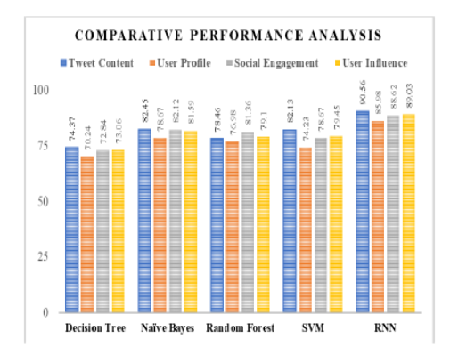


Indian Journal of Science and Technology
DOI: 10.17485/IJST/v17i20.3108
Year: 2024, Volume: 17, Issue: 20, Pages: 2056-2063
Original Article
Vinita Nair1*, Jyoti Pareek2
1Research Scholar, Department of Computer Science, Gujarat University, Ahmedabad, 380009, Gujarat, India
2Professor and Head, Department of Computer Science, Gujarat University, Ahmedabad, Gujarat, India
*Corresponding Author
Email: [email protected]
Received Date:08 December 2023, Accepted Date:22 April 2024, Published Date:14 May 2024
Objectives: To construct a comprehensive weighted multi-dimensional model to assess the impact of influence score of Twitter users, considering the credibility based on user profile, their tweets and social interactions aiming to empower users in distinguishing fake news or misinformation. Methods: The credibility evaluation is formulated based on text analysis, user account attributes, and user social engagement. We've gathered around 100,000 tweets from 100 users using Tweepy API over a six-month duration for the purpose of evaluating credibility. The collected tweets spanned diverse professions namely politics, entertainment, business, science, sports, and trending topics. We chose to utilize a self-devised deep active learning model to classify and label the unlabelled data instead of engaging in time-consuming human annotation for the tweets we gathered. Findings: The obtained accuracy for influence score evaluation for Recurrent Neural Network, Random Forest, Naïve Bayes, Decision Tree, and Support Vector Machine are 89.03%, 79.10%, 81.59%, 73.06% and 79.45% respectively. Upon reviewing and analysing the outcomes, RNN surpassed all other models achieving an exceptional accuracy of 89.03%. Novelty: Employing a weighted multi-dimensional framework, it systematically evaluates the influence score by considering the credibility of both users and tweets within the context of Twitter. Weighted features are instrumental in capturing the relative importance of different elements, leading to a more refined and context-aware decision-making process. In contrast to earlier research, which predominantly centred on the credibility of individual tweets, our research work shifts the focus to a broader perspective, encompassing the credibility of users, their tweets and their overall social influence. By incorporating user influence score, the framework not only empower users in discerning fake news or mis-information but also elevates their ability to gauge the reliability of information, offering a nuanced approach to news credibility analysis.
Keywords: Active Learning, Credibility Score, User Influence, Twitter, Machine Learning, Recurrent Neural Network
© 2024 Nair & Pareek. This is an open-access article distributed under the terms of the Creative Commons Attribution License, which permits unrestricted use, distribution, and reproduction in any medium, provided the original author and source are credited. Published By Indian Society for Education and Environment (iSee)
Subscribe now for latest articles and news.